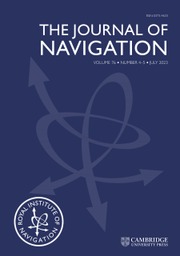No CrossRef data available.
Article contents
Performance differences in lifeboat launching procedures between IVR training and traditional practical lessons in maritime safety education
Published online by Cambridge University Press: 01 September 2025
Abstract
This research investigated the potential improvement of IVR on procedural practical knowledge in maritime safety education in a lifeboat case study. Participants were divided into three groups: a VR, control and VR+ group. A practical test exam with a real lifeboat was conducted to evaluate the differences in number of students passed/failed and overall performances in the execution of lifeboat launching procedures between groups. There was no evidence that the VR students had a higher success rate than students in the control group in correctly and safely performing a lifeboat drill. However, VR students’ overall performances on procedural correctness were significantly better than those of the control group, despite that the VR students never practiced with a physical lifeboat. Given the importance of safety in the maritime industry, it is worthwhile to further investigate to what extent IVR can provide a solution to the current limitations in maritime safety education.
Information
- Type
- Research Article
- Information
- Copyright
- © The Author(s), 2025. Published by Cambridge University Press on behalf of The Royal Institute of Navigation


